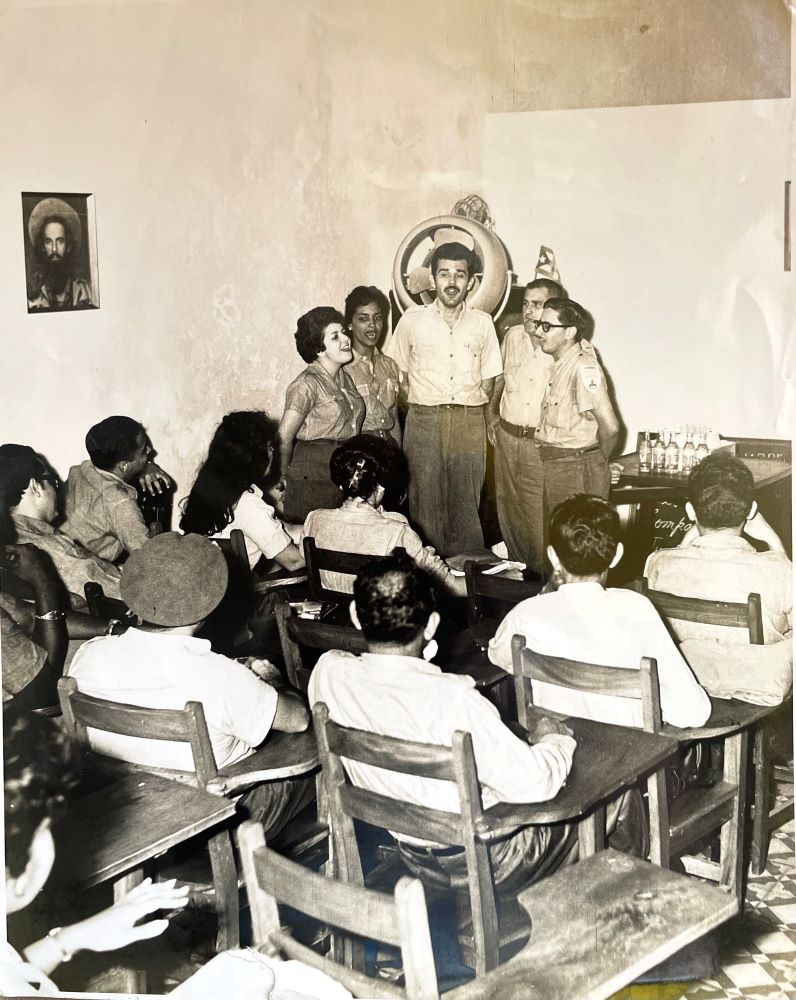Flanked by fellow instructors at an Escuela Básica de Instrucción Revolucionaria, Roberto García Añel, a young twenty-something who worked in the accounting division of his factory, led worker-students in revolutionary songs at this class session, held sometime in 1964. On the wall hangs a mass-produced portrait of the popular revolutionary Comandante Camilo Cienfuegos, whose plane had mysteriously disappeared over the sea in late October 1959, to the horror of millions of Cubans and the suspicion of many. The use of songs (such as Canto a Camilo) as a method of indoctrination and instruction abounded in these schools, as did reliance on slogans to explain Marxism or government policies. Songs and slogans served as substitutes for rigorous reading assignments, tests, and discussions of Marxism because the majority of worker-pupils attending EBIRs had not even completed the sixth grade. Party critics of these methods—considered mostly a vehicle for encouraging loyalism among the already loyal–called the approach manualismo and a waste of time. One wonders what the participants at the time thought. Havana, 1964. Personal Collection of Rolando García Milián, used with permission.
